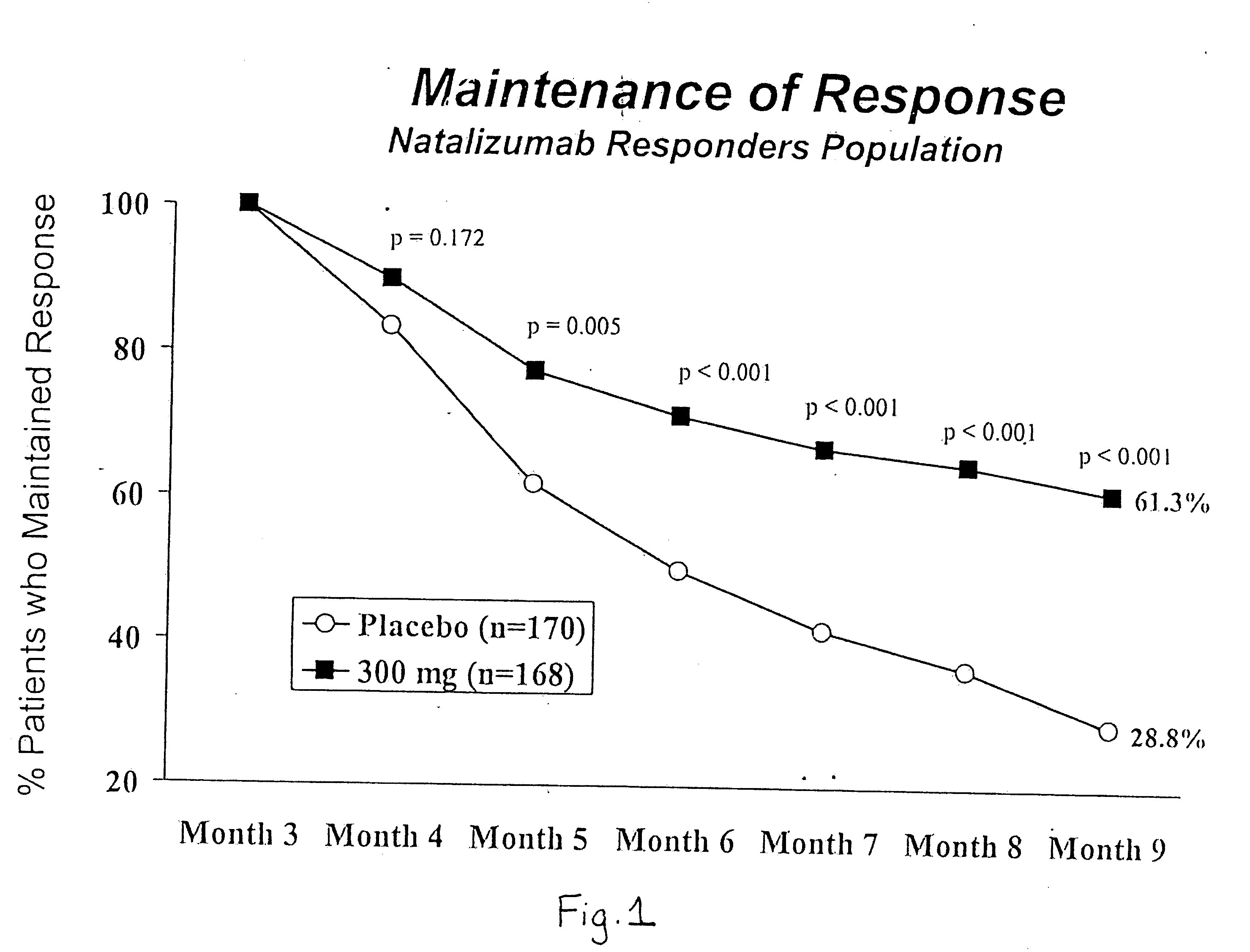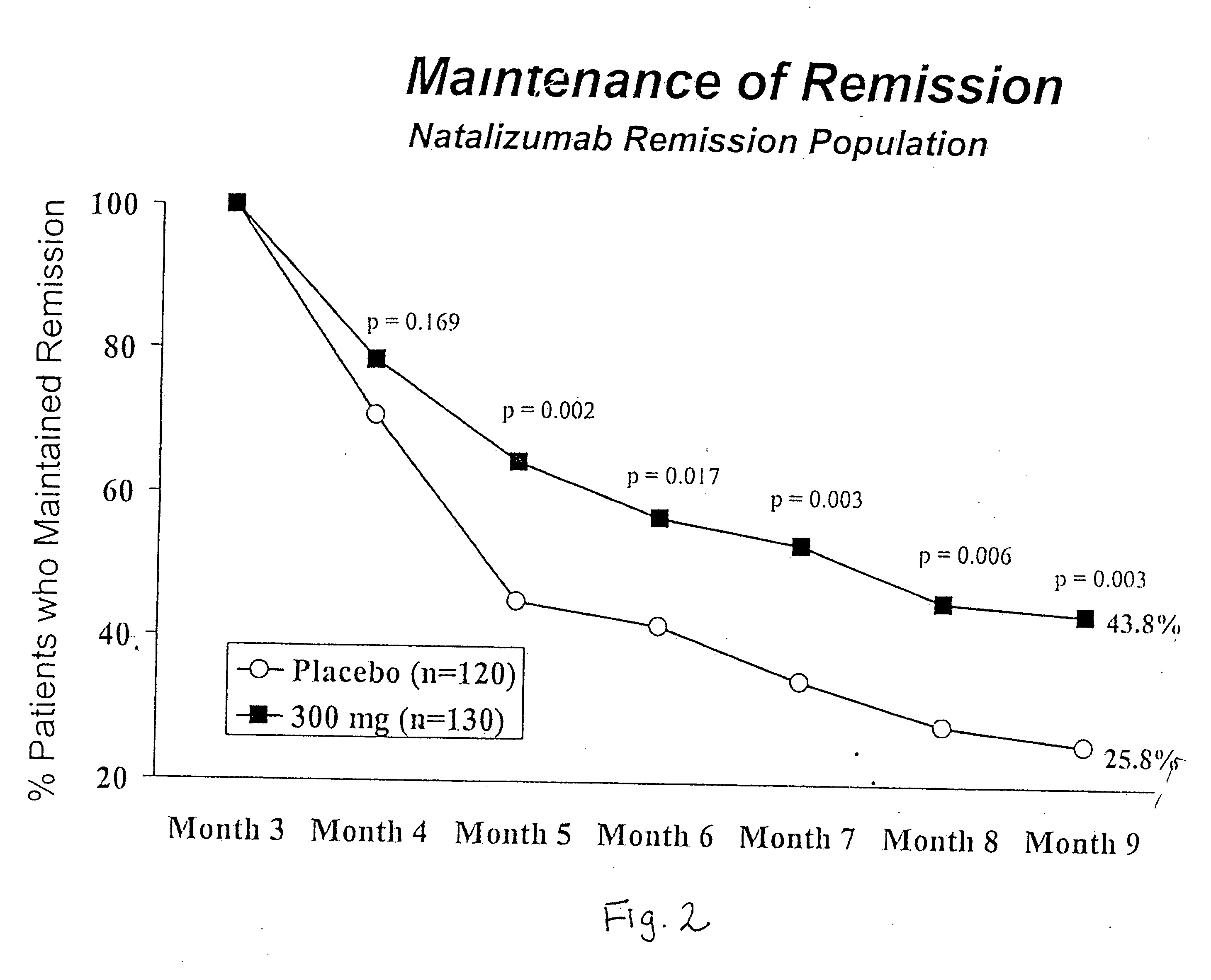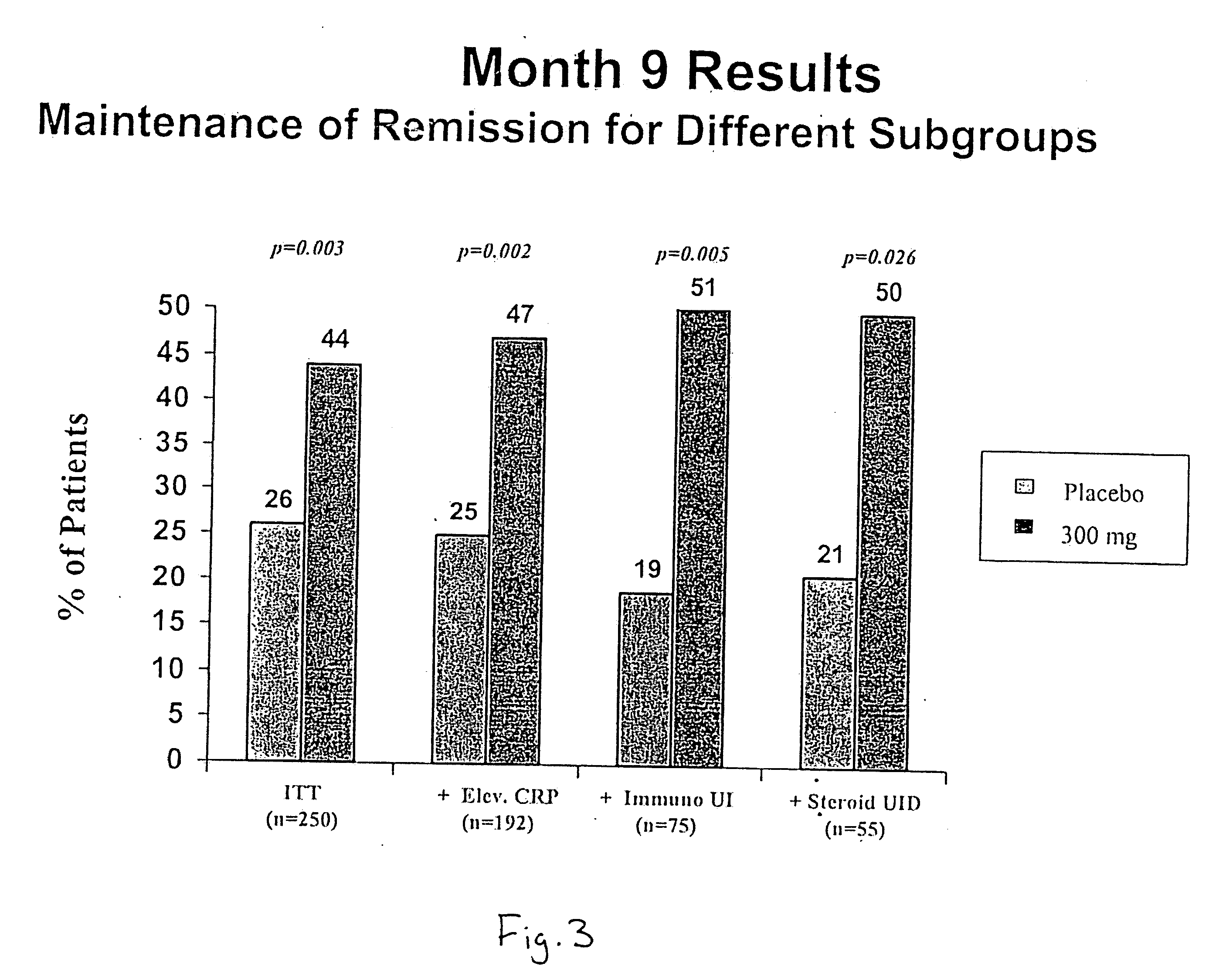Steroid sparing agents and methods of using same
a technology of steroid and sparing agent, applied in the direction of antibody medical ingredients, drug compositions, immunological disorders, etc., can solve the problems of inability to safely use for extended periods of time, serious or fatal damage, diseases and conditions resulting from brain inflammation with particularly severe consequences, etc., to achieve effective treatment or inhibit these diseases, long life span, and improved quality of life
- Summary
- Abstract
- Description
- Claims
- Application Information
AI Technical Summary
Benefits of technology
Problems solved by technology
Method used
Image
Examples
example 1
Soluble MadCAM-1 FACS Assay
[0372] This assay measures the interaction of recombinant soluble MadCAM-1with RPMI-8866 cells in suspension. Recombinant soluble MadCAM-1 (“rsMadCAM-1”) is expressed as a fusion protein with a human IgG Fc tail (Tidswell et al., J. Immunol. (1997) 159(3):1497-1505). Soluble MadCAM-1 is mixed with RPMI-8866 cells in the presence and absence of small molecule inhibitors. 1 mM MnCl2 is included in the assay buffer to increase the activity of α4β7 integrin and to promote its interaction with the MadCAM-1 construct. After 30 minutes at room temperature, the cells are washed with buffer containing 1 mM MnCl2 and are exposed to fluorescent-labeled antibody against the Fc tail of the MadCAM-1 fusion protein in the presence of 1 mM MnCl2 for 30 minutes at 4° C. The cells are washed, resuspended in MnCl2 containing buffer and examined by FACS analysis. An identical assay can be performed to measure the interaction of recombinant soluble VCAM-1 with cells that expr...
example 2
Cell Free ELISA Assay
[0373] This assay measures the interaction of solubilized α4β7 integrin with MadCAM-1 which has been immobilized on plastic. RPMI-8866 cells are lysed with a detergent to solubilize α4β7 integrin. Antibody against β7 integrin, 2G3 (Tidswell et al., J. Immunol. (1997) 159(3):1497-1505), is added to the lysate. This antibody serves two purposes, first, it is a tag by which α4β7 integrin can be detected in the assay and, second, 2G3 is an antibody that stabilizes a ligand occupied conformation of β7 integrin and promotes β7 integrin-dependent interactions. Cell lysate, 2G3, and test reagent are added to microtiter wells that have been coated with MadCAM-1. The mixture is allowed to incubate for 30 minutes at room temperature. The plate is washed, blocked with 1% BSA, and exposed to HRP-conjugated goat anti-mouse Ig, which recognizes 2G3 associated with α4β7 integrin that has bound MadCAM-1 on the assay well. After 30 minutes at room temperature, the wells are wash...
example 3
FACS Assay for Receptor Occupancy
[0374] This assay measures the interaction of antibody 2G3 with RPMI-8866 cells or with lymphocytes. The antibody recognizes a ligand-occupied epitope of either rat or human β7 integrin. Increasing concentrations of small molecule ligand induce the 2G3 epitope on β7 integrin and will allow higher levels of antibody binding to the surface of the cells. The concentration of ligand required for receptor occupancy is directly related to the ligand's affinity for α4β7 integrin. A similar assay has been described for examining the interaction of ligands with α4β1 integrin, which utilizes an analogous antibody against a ligand occupied epitope of β1 integrin (antibody 15 / 7; Yednock et al. (1995) J. Biol. Chem. 270: 28740-50). The β1 integrin assay relies on cells that express α4β1 integrin, rather than α4β7 integrin (such as Jurkat cells). In both assays, the appropriate cells are mixed with either 2G3 or 15 / 7 in the presence of the small molecule ligand. ...
PUM
| Property | Measurement | Unit |
|---|---|---|
| Time | aaaaa | aaaaa |
| Density | aaaaa | aaaaa |
| Dimensionless property | aaaaa | aaaaa |
Abstract
Description
Claims
Application Information
 Login to View More
Login to View More - R&D
- Intellectual Property
- Life Sciences
- Materials
- Tech Scout
- Unparalleled Data Quality
- Higher Quality Content
- 60% Fewer Hallucinations
Browse by: Latest US Patents, China's latest patents, Technical Efficacy Thesaurus, Application Domain, Technology Topic, Popular Technical Reports.
© 2025 PatSnap. All rights reserved.Legal|Privacy policy|Modern Slavery Act Transparency Statement|Sitemap|About US| Contact US: help@patsnap.com



